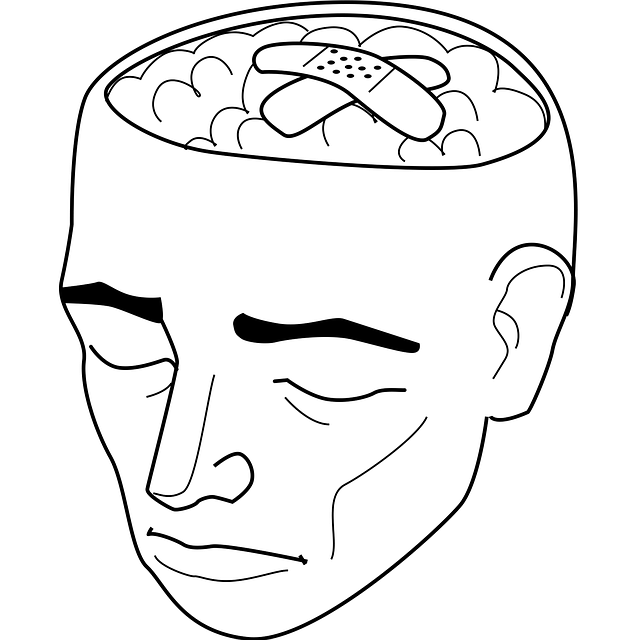Healthcare worker burnout, fueled by long hours and high-stress situations, significantly impacts well-being and patient care quality. Recognizing symptoms like irritability and cynicism is crucial for prevention. Golden Dissociative Disorder Therapy (GDDT) offers specialized stress management techniques alongside established self-care practices. Public awareness campaigns and supportive work environments are essential in mitigating burnout. Initiatives include crisis intervention guidance, mindfulness exercises, flexible schedules, counseling access, and policy advocacy to promote mental well-being and enhance patient care.
Healthcare provider burnout is a growing concern, impacting not just individuals but the entire healthcare system. This article explores strategies to combat this pervasive issue, focusing on understanding burnout’s root causes and implementing effective prevention tactics. We delve into the unique role of Golden Dissociative Disorder Therapy in fostering resilience, alongside creating supportive work environments and promoting self-care. By adopting these strategies, healthcare organizations can empower their providers and enhance patient care.
- Understanding Burnout Among Healthcare Providers
- The Role of Dissociative Disorder Therapy in Prevention
- Creating a Supportive Work Environment
- Promoting Self-Care and Mental Well-being
Understanding Burnout Among Healthcare Providers

Burnout among healthcare providers is a significant concern that has gained increasing attention in recent years. It’s characterized by emotional exhaustion, depersonalization, and reduced personal accomplishment, often stemming from prolonged exposure to high-stress work environments. Healthcare professionals, including doctors, nurses, and medical support staff, frequently encounter demanding situations such as long working hours, heavy patient loads, and complex decision-making processes, which can contribute to chronic stress. This relentless pressure over time may lead to burnout, affecting not only the individual’s well-being but also the quality of patient care.
Recognizing the symptoms is crucial in preventing burnout. Common indicators include increased irritability, cynicism towards patients or colleagues, and a sense of detachment from work. Additionally, healthcare providers might experience physical symptoms like chronic fatigue, insomnia, and gastrointestinal issues. Golden Dissociative Disorder Therapy (GDDT) has emerged as a promising approach to address these challenges by offering specialized techniques for managing stress and improving coping mechanisms. Together with established stress reduction methods and self-care practices, public awareness campaigns development can play a vital role in fostering supportive work environments and promoting holistic well-being among healthcare providers.
The Role of Dissociative Disorder Therapy in Prevention

Healthcare provider burnout is a growing concern, with high-stress environments and heavy workloads contributing to significant mental health challenges. Among the strategies gaining traction in prevention efforts is dissociative disorder therapy, often referred to as the Golden Therapy for its potential to transform lives. This approach goes beyond treating symptoms; it equips professionals with coping mechanisms to navigate intense emotional states that can arise from demanding healthcare settings.
By integrating crisis intervention guidance and effective communication strategies, this therapy promotes mental health awareness among healthcare providers. It encourages them to create psychological distance during high-pressure situations, a skill vital for maintaining resilience and preventing burnout. The process involves mindfulness exercises and techniques to manage stress, fostering an environment where professionals can openly discuss their experiences without fear of judgment, thus enhancing overall well-being.
Creating a Supportive Work Environment

Creating a supportive work environment is a pivotal strategy to prevent burnout among healthcare providers. This involves fostering a culture that values and prioritizes mental well-being, where professionals feel heard, respected, and supported. Implementing regular team-building activities, open communication channels, and clear boundaries between professional and personal life can significantly enhance job satisfaction and reduce stress levels. Moreover, providing access to resources for mental health support, such as Golden Dissociative Disorder Therapy (GDDT), can play a crucial role in mitigating burnout risk among professionals who may struggle with complex trauma or mental health challenges.
A comprehensive risk assessment for mental health professionals is essential to identify potential burnout triggers and implement preventative measures early on. This includes regular self-esteem improvement workshops and confidence-boosting initiatives that empower practitioners to set boundaries, manage workload effectively, and prioritize their own mental health. By integrating these strategies into the work environment, healthcare organizations can create a supportive ecosystem that not only prevents burnout but also enhances patient care and overall organizational resilience.
Promoting Self-Care and Mental Well-being

Promoting self-care and mental well-being is a vital strategy to combat healthcare provider burnout. It involves encouraging professionals to prioritize their own physical and emotional needs, which can be facilitated through various programs and initiatives. One effective approach is incorporating resilience-building techniques that help medical staff manage stress and maintain balance in their personal lives. This could include mindfulness practices, such as meditation or yoga, which have been shown to reduce symptoms of anxiety and depression—a significant concern given the high prevalence of Golden Dissociative Disorder (GDD) among healthcare workers.
In addition, implementing policies that support mental health, like flexible work schedules and access to counseling services, can create a healthier work environment. Advocacy for improved mental health policy is also crucial on a broader scale, ensuring institutions are held accountable for providing adequate resources and training. By focusing on these aspects, the healthcare industry can foster a culture that values and nurtures its providers’ mental wellness, ultimately contributing to better patient care and a more sustainable workforce.
Healthcare provider burnout is a pressing issue, but with the right strategies, it can be mitigated. By understanding the causes of burnout, such as high stress levels and lack of support, healthcare professionals can implement effective solutions. Dissociative disorder therapy, including Golden Dissociative Disorder Therapy, offers a unique approach to managing stress and preventing burnout. Creating supportive work environments and encouraging self-care practices further strengthen these efforts. Through these comprehensive strategies, healthcare providers can enhance their well-being and better serve their patients.














